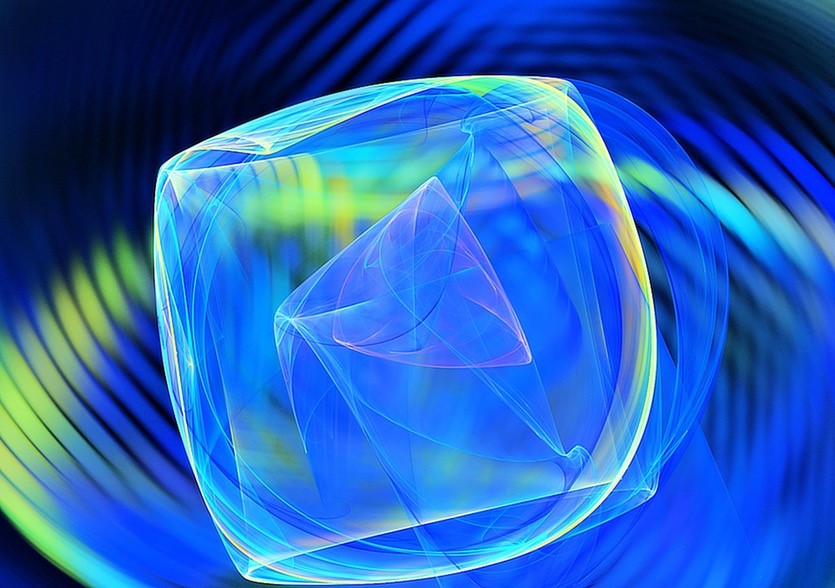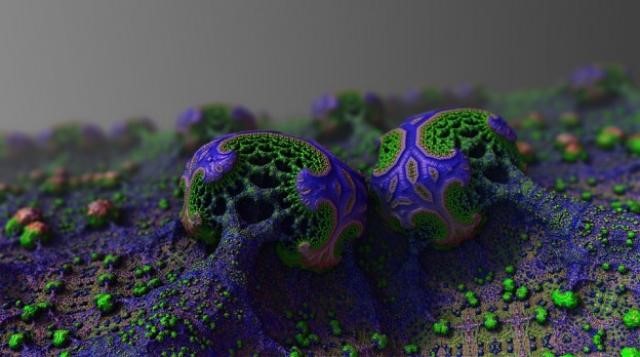
By Brian Santo
Two sets of physicists, one group based at Harvard and the other at the University of Maryland, have reported the discovery of time crystals, a state of matter whose existence seems to trash the notion of cause-and-effect.
The Harvard group describes time crystals this way: They are substances “whose lowest-energy configurations are periodic in time rather than space.”
Let's back up a bit and look at ordinary crystals, which are defined by having molecules organized in a lattice. In ordinary crystals, this lattice pattern doesn't change over time, which means that the quantum state doesn't change over time, either — not without some external stimulus.
Time crystals are different in that their lattice structures do change over time, which means that the quantum states change, too. The changes repeat (periodicity), and the changes cycle around without any outside force of any kind applied.
Furthermore, these changes are oddly resistant to perturbation — they don't react the way that any classical physical system might.
The Harvard-based group also includes some physicists from Princeton, including Shivaji Sondhi, whose explanation of this bizarre behavior is widely quoted because of its perfect vividness. He compares driving the time crystal's quantum system to squeezing periodically on a sponge. “When you release the sponge, you expect it to resume its shape. Imagine now that it only resumes its shape after every second squeeze even though you are applying the same force each time. That is what our system does,” he said.

In layman's terms, in time crystals, effect does not necessarily follow cause. The specific physics principle that time crystals are violating is called time translation symmetry.
“Symmetry” is an umbrella term for any of a number of changes — transformations — in space and time. In a physical system in which nothing happens to the objects that changes their nature or their relationship with each other, then the conditions of the system are assumed to persist — be invariant — over time.
That's time translation symmetry. It's the symmetry that time crystals seem to violate as they cycle through different states without any stimulus applied.
Like every other physical phenomenon, symmetries can be described using mathematical formulae. Discoveries of actual physical phenomena often follow the discoveries of quirks in the math that suggest that those phenomena are mathematically feasible. So it was with time crystals.
Five years ago, Frank Wilczek, a physicist at MIT, worked out the formulae, demonstrating that it might be possible that time translation symmetry could be broken and that time crystals might exist.
Wilczek's paper is written in the nearly impenetrable jargon of modern physics, but he allowed himself a quip acknowledging the implausibility of time crystals. The idea, he wrote, comes “perilously close to fitting the definition of a perpetual motion machine” — the ne plus ultra of crackpot theories. But the math was the math.
It turns out that Wilczek did have one detail wrong. He thought that time crystals might exist in a state of thermal equilibrium.
That turned out to be impossible, the Harvard group explains in a pape r, but that led to speculation about their existence in systems that never reach thermal equilibrium. One of those was a so-called black diamond , the substance in which Harvard observed the phenomenon.
Both groups that recently observed time crystals published their results in the journal Nature. A summary of the Harvard paper and paid links to the full text are here ; the same for the Maryland paper here .
Time crystals are so exotic and the physics are so esoteric that people can only guess what the possible applications might be. Those guesses include quantum computing and hypersensitive magnetic sensors.
One would think that there wouldn't be any shortage of time crystals in the world, but they're rarer than might be expected. The most famous are the time crystals that power Dr. Who's space/time vehicle, the TARDIS (time and relative dimension in space) in the Doctor Who television series. Indeed, a full half of all stories on the new time crystals mention Dr. Who.
But there are others.
Timesplitters in the “Timesplitters” series of video games use time crystals to travel through time to destroy the human race which, if I recall correctly because I actually played one of those games a really long time ago, would be A Bad Thing To Happen.
Then there's the TV movie “The Time Crystal ” (1981), which is one of the most excellent things ever because it was directed by Ron Howard, stars Vic Tayback from “Flo” and “Alice,” and has one of the best descriptions ever (from IMDB): “A lad finds himself magically sent back to ancient Egypt where he and the young King Tut team up to stop their evil and overly ambitious elders” — which, of course, makes you want to watch it right away, right? Except that it's not on Netflix or Hulu or Amazon, which is one of the least awesome things ever.
Advertisement
Learn more about Electronic Products Magazine





